
Advertise on podcast: Moore's Lobby: Where engineers talk all about circuits
Rating
4.9 from
Country
This podcast has
80 episodes
Language
Publisher
Explicit
No
Date created
2020/04/23
Average duration
56 min.
Release period
30 days
Description
Our Moore's Lobby Podcast serves an elite global audience of engineers, technologists, and executives with a goal to educate, empower, and entertain. We discuss the technologies and engineering behind the hottest industry trends as host Daniel Bogdanoff guides you through the human stories behind the world's most inspiring organizations and leaders. Tune in every other Tuesday for new episodes.
Social media
Check Moore's Lobby: Where engineers talk all about circuits social media presence
Podcast episodes
Check latest episodes from Moore's Lobby: Where engineers talk all about circuits podcast
Quantum Computing: Sci-Fi Technology Requires Real-World Engineering
2024/02/13
A decade after demonstrating the first entanglement of semiconducting spin quantum bits, or qubits, Oliver Dial and IBM Quantum are developing the ICs, cryogenic systems, error mitigation techniques, and software tools that will identify solutions to problems beyond the scope of classical computers. Recently, the IBM Quantum team announced the Heron 133-qubit and Condor 1,121-qubit quantum processors, and Dial joins us to talk about a subject that he loves.
The highlights of this conversation between Dial and our Moore’s Lobby host, Daniel Bogdanoff, include:
A comparison of quantum and classic Turing computing systems. Temperatures down to 0.1 kelvin (brrr!) to noise temperatures of 30,000 kelvin (hotter than the sun, but not really). An audio symphony of quantum circuits running computations from around the world. Qubits are probably much bigger than you would expect. Why packaging engineers are the unsung heroes of the semiconductor and quantum industries. Semiconductor engineers telling quantum engineers, “you guys are doing these all wrong.” The technology advance in the newer Heron processor that Dial is most excited about.
more
Energizing the Future: Real-Time Precision in Renewable Energy Management
2024/01/30
Optimizing energy generation and consumption requires accurately measuring currents and voltages. In addition, to maximize overall efficiency, that data must be shared in real-time or near real-time.
The highlights of this conversation between Henrik Mannesson of Texas Instruments and host Daniel Bogdanoff include discussing:
-The differences between power management in the home or small factory and power management at the grid.
-The evolution from smart metering to energy management.
-The importance of accuracy in power measurement and how to achieve it.
-The benefits of staying with a single company for many years.
more
Stepping Outside the Metaverse to Discuss Next-Gen Hardware Development
2024/01/16
About three decades after the term “metaverse” was coined, Facebook rebranded as Meta as they increased their focus on building virtual and augmented reality platforms. Today, Agustya Mehta helps lead Meta’s development of the next generation of XR products in his role as their Director of System Platforms for Reality Labs Hardware.
In this episode of the Moore’s Lobby podcast, Agustya and host Daniel Bogdanoff discuss building tomorrow’s AR/VR systems using today’s technology. Agustya also shared lessons learned along the way from working at several of the world’s leading tech companies including Apple and Microsoft.
more
Marveling at MEMS: The New Superheroes of The Silicon World
2023/07/11
Silicon transistors naturally get most of the attention. However, delicate silicon microelectromechanical systems (MEMS) with movements that are often measured in angstroms are making some noise of their own (metaphorically, because you won’t be able to hear those tiny vibrations!).
By focusing in parallel on the MEMS device and the silicon processing required to build them, SiTime has been able to improve MEMS resonator performance “close to 100,000” times, says Fari Assaderaghi, EVP of Technology and Engineering at SiTime.
Assaderaghi went on to state:
“Timing is like an unsung hero that is behind the scenes, but its performance actually limits or enables certain performance characteristics that you see at the end systems.”
Over his career, Fari learned many important lessons that he shares during this thoughtful interview. One of these is to “always go back to first principles.” He expounds on this by stating, “If you don't understand something, don't paper over it. Keep on digging.” He concludes with the warning, “There is no shortcut, and if the fundamental doesn't support it, eventually it's going to come and get you.”
Assaderaghi also learned to focus on your ultimate goal rather than what you think is possible. “If you start with what you want to achieve...you would be surprised that eventually what you thought was not possible, actually it is possible.”
Our Moore’s Lobby host, Daniel Bogndanoff, also discusses with Assaderaghi his fascinating personal journey. Over his career, Assaderaghi has had the pleasure of working alongside luminaries like Chenming Hu, the father of Finfets; Robert Dennard, the inventor of single-transistor DRAM; and Lisa Su, CEO of AMD.
Other highlights from this interview include:
-The unique SiTime culture that Fari credits to the CEO, Rajesh Vashist.
-The importance of failure
-The tuning of silicon’s mechanical properties, not just electrical
That’s a wrap on Season 6 of Moore’s Lobby. We hope you have enjoyed hearing from these amazing guests as much as we have. Please tell us what you think in the comments or share your suggestions and requests for guests and topics for Season 7.
more
AI or 5G? EdgeQ Asks, “Why Not Both?” While Building a Wireless Base Station-on-a-Chip
2023/06/27
It all began with a love of mathematics. Adil Kidwai loved mathematics. That initially led him to a career focused on analog and RF design. After many years working on RF technology leading efforts in cellular communication, Wi-Fi, and Bluetooth, Adil had a chance to move into the AI field.
When he started digging into AI, Kidwai had an epiphany. “I realized that AI borrowed a lot of concepts from information theory which were developed 50 years ago.” The mathematics of RF communication and artificial intelligence were basically identical: convolutions, matrix multiplication, nonlinear operations, and more.
It was during this time that Kidwai met EdgeQ CEO and founder Vinay Ravuri for lunch, and it “just clicked”. Kidwai recalls that they were thinking exactly the same things about the relationships between AI and 5G. So, Kidwai joined EdgeQ, where they have developed an integrated circuit that leverages the customization capabilities of RISC-V to enable and optimize both AI and 5G.
They believe that their “software-defined base station-on-a-chip” allows AI to complement 5G in some applications and 5G to complement AI in others. As Kidwai notes, “these two technologies support each other in the world that we are living in.” And, they already have their eye on 6G.
In this Moore’s Lobby interview with our host Daniel Bogdanoff, Kidwai shares how different it was when moving from a behemoth like Intel to a startup. “You have to move like 100 mph on day one!…because it’s a question of existence all of a sudden.”
Here are a few other highlights from this interview with Kidwai:
-Think your master’s thesis was difficult? Wait until you hear what Kidwai had to accomplish at UCLA.
-His reflections on spending several years in Munich working on Intel’s acquisition of Infineon’s wireless group. He even has some recommendations for people considering moving abroad.
-The surprising changes in the wireless world Kidwai has seen in his decades working in the industry.
There is much more, so go listen for yourself! Please tell us what you think in the comments. We would also love to hear your recommendations for the companies and people you would like to hear from in future episodes of Moore’s Lobby.
more
Getting Out of the Weeds with John Deere’s Revolutionary AI Technology
2023/06/13
Imagine 1500 laptops strapped to a 120 foot (36 m) wide sprayer being pulled behind a tractor. That gives you a rough understanding of the compute power inside the John Deere See & SprayTM that targets herbicide to the weeds, not the crops. These might be “the smartest agricultural machines in the world,” says Chris Padwick, Director of Computer Vision and Machine Learning at Blue River Technology, a wholly owned subsidiary of John Deere.
Padwick was not looking to return to his agricultural roots, but in a “shields down” moment” he was approached by a startup, Blue River Technology. He recalls being “completely blown away” by what they were doing in computer vision.
After initially developing a product for lettuce thinning, Blue River pivoted to the problem of row crop weeding. In the US alone, the agricultural industry uses over 20 million gallons of herbicide annually, almost all of it through broadcast spreading across the entire field. Blue River set to work on changing the paradigm to only spray the weeds. According to Padwick, this “dot matrix printer for weeds” has the potential to “save 15 million gallons of herbicide” and “about a billion dollars.”
In this episode of the Moore’s Lobby podcast, Padwick takes us behind the scenes to discuss the challenges of data collection in the fields, image classification, the compute technology that drives these real-time systems, and much more. On this business side, he reflects on the 2017 acquisition by John Deere and how important that was in their development of products at scale that can operate in rugged environments for two decades.
“I feel like we're going to look back on farming in five or ten years and we're just going to be amazed…Precision spot spraying is going to be the way that people treat their crops going forward because it's going to allow them to save so much more chemical. And the sustainability in the environment is kind of unparalleled. So I really feel we're kind of at that inflection point for agriculture.”
So, listen in on this fun interview as Padwick describes:
- His graduate research into Big Bang cosmology and background radiation
- Why he left engineering as an undergrad—seriously, universities we have to fix this outdated solution to engineering education!
- Blue River’s global operations to collect crop and weed images to drive continuous improvement
more
VC-Backed Hardware Design Collaboration is the (All) Spice of Life
2023/05/30
In this unique episode of the Moore’s Lobby podcast, we get to hear from not only the technologists and executives behind the company but the investor who is helping them make their dreams a reality.
As an electrical engineer, Chrissy Meyer had spent years working in product design on large projects at Apple, including the Apple iPod Nano and Touch. She is all too familiar with the outdated methods of hardware collaboration and design reviews—printed schematics, highlighters, and engineers huddled around a conference room table.
According to Kyle Dumont, a first-time entrepreneur as Allspice CTO, their goal is centered “around making it easy to build a workflow and collaboration process for electronics designs.” In his earlier career working in hardware at both large and small companies, he also “became pretty frustrated with how difficult it was to collaborate on our electronics designs.”
Valentina Ratner, CEO of Allspice, goes on to explain that the industry is “trying to build colonies in Mars, and I don't think we're going to get there with Google Sheets and PDFs and screenshots.”
In her current role as a partner at Root Ventures investing in early-seed tech startups, the engineer inside Meyer had a “visceral” reaction when Ratner and Dumont explained their vision to bring Git-style collaboration software to the hardware world. Meyer explains that “there was never a doubt in my mind that this problem that they were describing was very real. Because the truth is I had lived it for 15 years.”
Meyer said, “I had to take off my engineering hat for a quick second and say, okay, reign in the excitement. Yes, this is a fantastic product for an engineer. Is this a great investment?...the truth is, there are far fewer electrical engineers than there are software developers.”
With the backing of Root Ventures, Ratner and Dumont founded Allspice and quickly got to work. As a first-time entrepreneur and CEO, Ratner admits that she had to learn a lot quickly because “there are just so many unknowns.”
Reflecting on some early lessons, Ratner shares some interesting advice for fellow tech entrepreneurs:
“It's less about convincing anyone and more about finding the people that already believe in the version of the world that you're trying to build.”
Other highlights of this round-table discussion include:
-Meyers’ belief that “'there's this common misconception that in order to approach VCs, you need to have a fully polished pitch deck, and you need a financial model and forecasts and projections.”
-Insights on one of the favorite features of Allspice: the ability to run digital, asynchronous hardware design reviews
-Where Meyer thinks hardware and software companies are going to win in the future
more
Powering a Green Future: Insights from Infineon’s Peter Wawer
2023/05/16
Engineering careers, even very successful ones, don’t always progress in a nice orderly manner. In this episode of Moore’s Lobby, Peter Wawer, Division President of Green Industrial Power at Infineon Technologies, retraces a fascinating technical and business career that is still going strong.
As a second-generation electrical engineer, the industry still excites him. Wawer says that electrical engineering is “a fascinating topic” that allows you to “innovate and develop things to the greater good.” In his encouragement to the next generation of engineers, he states that “it's very rewarding tackling the issues and the challenges that we face” in society today.
Over the last decade, he has worked in power electronics at Infineon as they have invested and developed wide bandgap technology to serve important industries that are shaping our world: renewable energy, electrification, data centers, and more.
In addition to his extensive work on multiple leading-edge technologies, Wawer has been inside just about every corporate transition you can imagine. These have ranged from spinoffs and billion-dollar acquisitions to bankruptcy and government-rejected purchases.
When discussing major spinoffs like the creation of Infineon from Siemens, Wawer describes the “mixed” feelings within the company. Some view the larger company “as an advantage” by providing “more critical mass and more diversity.” While others see the benefits of a smaller company “being more focused.”
Wawer got started in the nascent silicon PV industry during his graduate studies and early career at Siemens. Then, after a number of years working on embedded Flash, he moved back into the solar industry; a time that he describes as “big fun” with the industry really beginning to take off.
In this Moore’s Lobby conversation with host Daniel Bogdanoff, Peter Wawer also discusses:
-The history and differences between thin-film and thick-film solar
-Why different semiconductor memory technologies—DRAM and Flash—are not fabricated in the same fabs
-Unique characteristics of trench and planar silicon carbide MOSFETs
-The performance and reliability challenges that impact power electronics beyond just the semiconductors
more
Burning Man Maker, Music Mogul, and PCB Revolutionary—Flux CEO Matthias Wagner
2023/05/02
Matthias Wagner learned early in his career that not everything is like an engineering “marketing video…all so streamlined and perfect.” Sometimes you have to dive into a project with no documentation and no roadmap and “figure it out now.” That fearless, can-do attitude has led him on a circuitous and amazing route into, out of, and now back into the electronics world where he is leading Flux as they try to remake the PCB design flow.
While others have previously tried and failed, Wagner recognized that many of these were “too small of dreams to make any meaningful change…you just need to start from scratch.”
And yeah, that's scary. And it's a lot of work, don't get me wrong, it's very hard. But then what else were you going to do with your time that was worthwhile?
One of Wagner’s career pivots was out of the electronics industry and into the music industry. In this fascinating interview, Wagner reflects on that decision and states, “that was a really dumb idea at the time, but I made it work.” And, boy, did he ever! During his foray into the music industry, Wagner’s work sold over 1 billion units across the globe and was honored with platinum and gold records. His song, Axel F by Crazy Frog, has nearly 3.8 billion (yes, billion with a b) views on YouTube.
And we haven’t even mentioned his experiences developing energy systems for Burning Man that then lead to working at Facebook on products with billions of users. You will just have to listen to hear about those. And, after listening to this episode, you might be inspired to “give yourself permission to dream big dreams.”
Other highlights from this Moore’s Lobby interview with Matthias Wagner include:
-Why hardware engineers are jealous of software developers
-The competition between hard core gamers and general users when developing Oculus
-What the PCB and electronics industry can learn from developments in the music industry
-Learning how to run a business by NOT running a business
more
From Apple to OpenLight: Silicon Photonics and Integrated Lasers with Dr. Tom Mader
2023/04/18
I’ll bet that you didn’t know that the original concept for what became the Apple Thunderbolt interface involved optical communication. Well, in this fascinating podcast with Dr. Mader, you will learn that intriguing backstory and much more.
Mader also provides a helpful introduction to silicon photonics technology and applications. Importantly, OpenLight’s business model is designed to allow them to become an Arm-like IP provider for silicon photonics. “We’re the first open siliconics platform that has the lasers and amplifiers integrated on the chip,” explains Mader.
With the OpenLight Process Design Kit (PDK), customers can integrate InP lasers and amplifiers directly into their silicon IC designs at Tower Semiconductor. While the silicon can be employed to guide, modulate, and detect light, you need the InP to amplify. OpenLight literally brings the silicon and the InP together with molecular bonding.
While silicon photonic is already making inroads in a number of important applications, Mader is “excited about the long tail of applications” enabled by OpenLight and their customers.
In addition, Mader recounts his rich technology background that includes developing a patent while interning at Apple, being involved in an early Amazon commercial product, directing engineering at a startup that was inquired by Intel, and his family connections to the legendary Fairchild Semiconductor and our podcast’s name inspiration, Gordon Moore.
So, listen in for other interesting tidbits from this discussion with Mader, including these technical insights:
-A clear description of a silicon photonics system
-What makes a quality integrated laser?
-How amplitude modulation (AM) and phase modulation (PM) are employed is laser systems
more
Synopsys’ Stelios Diamantidis Is Bringing the Magic of AI To Chip Design
2023/04/04
“It’s a magical world.” After several decades in the chip design industry, Stelios Diamantidis might be just as fascinated by the work he gets to do today as when he saw his first computer as a child growing up in Greece.
Inspired by the success of computers and AI systems in defeating humans in strategy games like chess and Go, Diamantidis wondered, “what if we were to one day be able to treat chip design as a game, a very complex game?” Armed with that question, Diamantidis and his Synopsys colleagues got to work.
Eventually, that led to their DSO.ai (design space optimization using AI) product. As Diamantidis explains in the interview, they started on smaller challenges in the IC design flow and have expanded over the past few years. “I'm extremely excited that this…technology has provided a framework for all of them, no exceptions so far, to actually come up with great solutions.”
When discussing IC design optimization, Dimantidis states, “everybody has their own definition of the problem.” CPU designers want to optimize speed, GPU designers are focused on reducing energy consumption, and flash memory designers “are very paranoid about size because they're going to manufacture tens or hundreds of millions of units.”
In this Moore’s Lobby interview with host Daniel Bogdanoff, Diamantidis shares his experiences at an early pioneering tech company working with “some of the most remarkable folks I’ve ever met” while solving problems that were “the stuff of science fiction.” He also shares insights from founding two different EDA technology companies of his own.
Here are a few other interesting stories and anecdotes from this fascinating interview with Diamantidis:
-How some life decisions come down to snow versus palm trees
-About how budding computer programmers in Greece used to share their code through a print magazine—our younger audience might find that hard to believe
-What Jurassic Park, US President Bill Clinton, and Stelios’ early dreams have in common
-It’s not really what you miss, but what you don't know you miss
There is much more, so go listen for yourself!
more
Seeing the Big Picture of Vehicle Electrification with Texas Instrument’s Fern Yoon
2023/03/21
Fern Yoon always enjoyed learning how things work. However, like many, or even most, electrical engineers, she grew up with a very limited understanding of the profession. Even through college, she still had a narrow understanding of what engineers actually do on the job. (Hmm…maybe this is why attracting people to engineering careers is difficult?).
After beginning her career with Texas Instruments as a thin film process engineering intern, Fern had the opportunity to go on a job rotation where she could see there were “a lot of different roles that existed that I honestly didn't realize.” This experience opened her eyes to a new world of possibilities and find her true satisfaction in working with customers and being able to take in the big picture.
Fern’s excitement comes across as she discusses working as a fab engineer, helping build a ruggedized laptop, and in her current position working on vehicle electrification.
When I started working in automotive ten-plus years ago, cars had a big emphasis on sustainability, emissions, and of course, reliability. Fast forward ten years, the cars are starting to look like a supercomputer on wheels.
In her 15 years at TI, Fern has steadily worked her way up the ranks and learned a lot of valuable lessons about working in teams, collaborating with customers, and charting your career path. In this second episode of All About Circuits’ coverage of women in engineering month, Fern provides interesting insights and anecdotes that you will not want to miss, including:
-How vehicle electrification is probably impacting more in our cars than you imagine
-Why electrical engineering was “the lesser of four evils”
-Her best advice to engineers
-Why you shouldn’t be afraid to learn that you don’t like something
more
Podcast reviews
Read Moore's Lobby: Where engineers talk all about circuits podcast reviews
anxnsodkcoapsjdj
2024/02/22
Love love love
Great podcast. One of the best, keep em coming! Thank you.
Notasteve
2021/08/11
Amazing Guests
Seems like there are a lot of inspiring engineers with stories i can relate with. Great podcast!
ericlauritzen
2020/09/16
Best podcast
This podcast really helps you spend time mentally with engineers. I hope they make many more episodes.
EdSAZO
2020/07/02
Great Pod
Very informative and interesting discussions to keep the inner Nerd at bay!
ZachWendtThere
2020/06/11
Balanced and Enjoyable
A fantastic balance of technical content, enjoyable guests, and entertainment.
XAspenHole
2020/05/01
VP
Very interesting and timely
Great quality sound
KendallMV
2020/05/01
Great for engineers and EE industry geeks
As a non-engineer in the electrical engineering industry, I truly enjoy the accessibility of this podcast. There are few podcasts out there that discu...
more
Podcast sponsorship advertising
Start advertising on Moore's Lobby: Where engineers talk all about circuits & sponsor relevant audience podcasts
You may also like these technology Podcasts
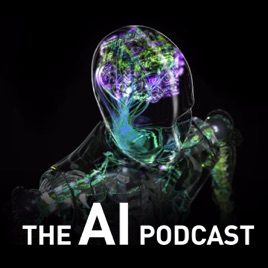
4.5
254
212
The AI Podcast
NVIDIA
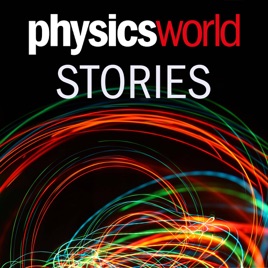
4.1
73
100
Physics World Stories Podcast
Physics World
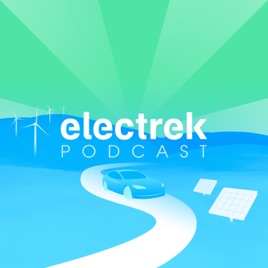
4.4
405
104
Electrek
9to5Mac
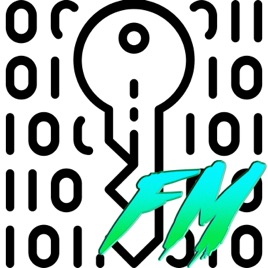
4.6
10
21
Cryptography FM
Nadim Kobeissi
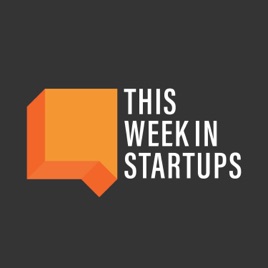
4.2
1209
1009
This Week in Startups
Jason Calacanis
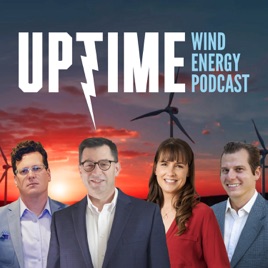
4.6
33
295
The Uptime Wind Energy Podcast
Allen Hall, Rosemary Barnes, Joel Saxum & Phil Totaro

4.6
69
143
FRAMES Photography Podcast
FRAMES Magazine

4.6
695
942
Kim Komando Today
Kim Komando
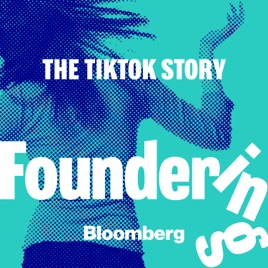
4.5
904
164
Foundering
Bloomberg
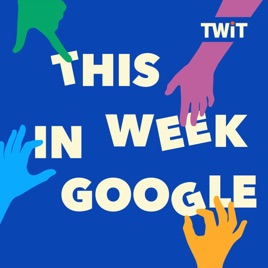
4.1
662
90
This Week in Google (Audio)
TWiT



